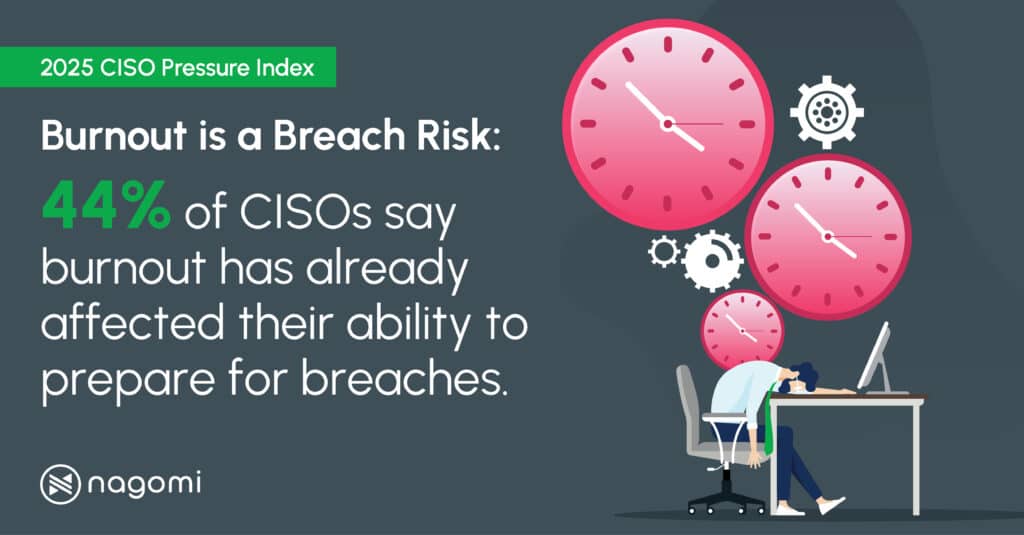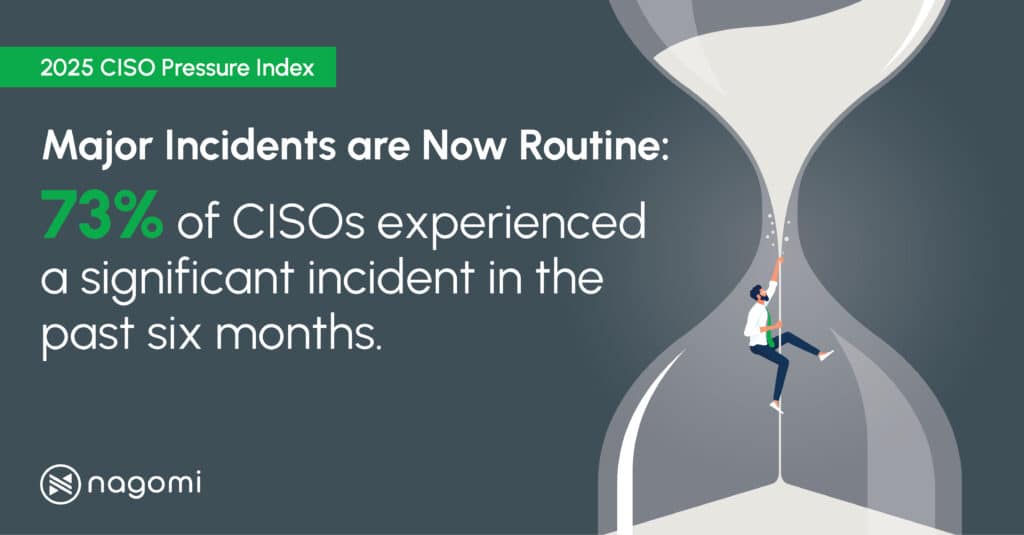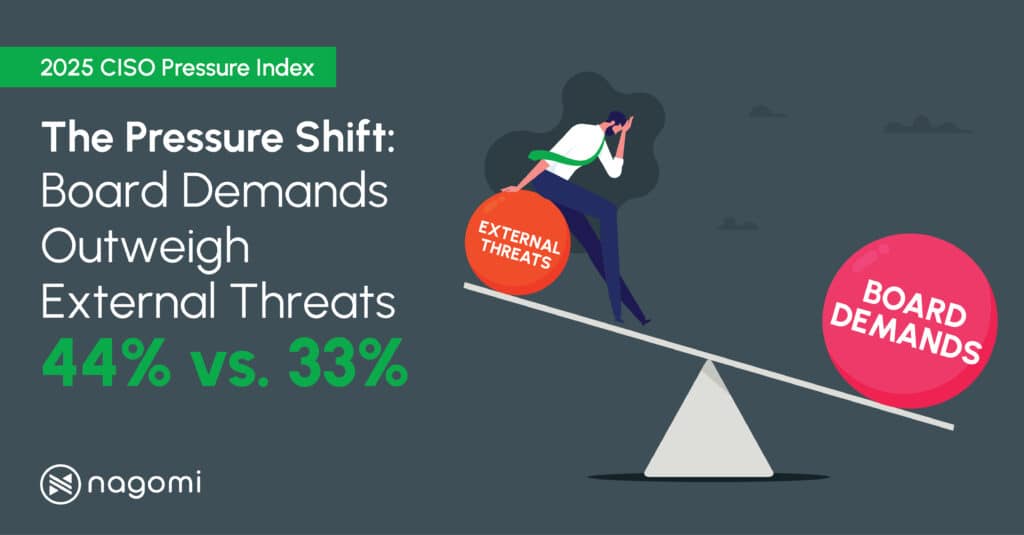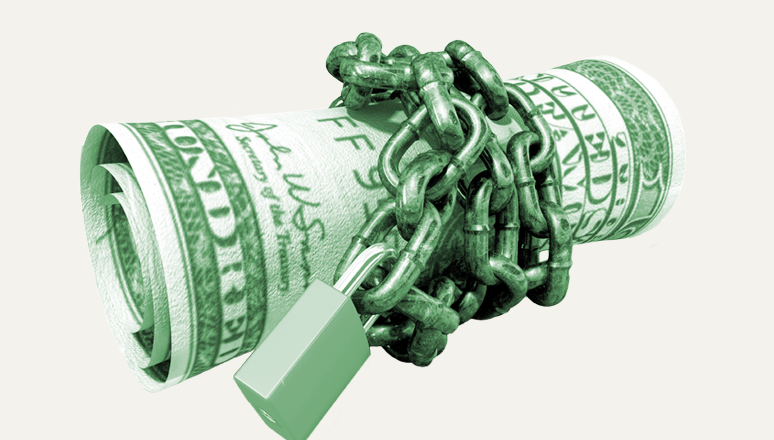back to blog
BLOG Nov 12 2025
CISO Pressure as Business Risk: Why We Commissioned the CISO Pressure Index
Emanuel Salmona

Table of Contents
The 2025 CISO Pressure Index was created to understand the modern challenges security leaders face. In this post, Emanuel Samona explains why Nagomi commissioned the research, what it reveals about the state of cybersecurity leadership, and how organizations can respond to rising pressure with smarter strategy and shared accountability.

In recent years, the CISO’s role has shifted from technical specialist to business enabler, shaping how companies understand risk, earn trust, and stay resilient.
Despite this growing importance, the CISO remains one of the few ‘chief’ roles that often doesn’t report directly to the CEO, while still carrying full board-level accountability. With that responsibility comes mounting pressure. Many of my conversations with security leaders echo the same themes: the demand to do more with less, the personal weight of accountability, and the fatigue of defending against an ever-expanding set of threats.
We commissioned the 2025 CISO Pressure Index to capture that reality. We wanted something tangible, beyond anecdotes and headlines, something that reflects what life in cybersecurity leadership really looks like today. The goal was to understand not just the symptoms of pressure, but the systems that create it. Only by seeing those pressures clearly can we start to change how organizations think about security, leadership, and shared responsibility
The Cost of Carrying Too Much Alone
The data shows a role on the edge of exhaustion. Eighty percent of CISOs report extreme stress, and two-thirds say they experience burnout weekly or daily. Nearly half admit that burnout has already affected their ability to prepare for a breach. They’re defending against nonstop threats while juggling the expectations of boards, regulators, and customers. Yet too often, that responsibility falls squarely on one person. When an incident happens, the CISO is still the first to be blamed, even when the cause was outside their control.

This is not only a personal burden. When leadership fatigue sets in, the entire organization becomes more vulnerable. Burned-out CISOs make reactive choices, lose critical talent, and struggle to maintain strategic focus. The 2025 CISO Pressure Index makes it clear: supporting security leaders isn’t about empathy, it’s about stronger defense. When CISOs have the space and support to lead, the whole business is safer.
Complexity Without Clarity
One of the clearest signals in the data is the widening gap between investment and impact. Seventy-three percent of CISOs faced a major breach in the past six months, yet 58% percent said a tool was already in place that should have stopped it. Many organizations have built massive, complicated technology stacks on the belief that more tools equal more protection. That belief no longer holds. In reality, complexity often creates confusion. Teams spend more time connecting systems and interpreting redundant or irrelevant data than actually improving defenses where it counts. The growing pressure to show ROI only deepens the problem.

At Nagomi, we see this as a call to simplify. Security teams do not need more technology; they need more understanding of what is working and the ability to close the gaps that matter most. Our mission is to prevent the preventable breach, which is done by ensuring your stack is simple and works as intended.
The Leadership Paradox
Another theme that surfaced in the research is the growing expectation for CISOs to serve as both technical experts and business leaders. Eighty-seven percent say pressure in their role has increased over the past year, and nearly half point to board expectations as a primary source. They are now expected to explain cyber risk in business terms, translate it into financial impact, and prove how security supports growth and resilience.

The intent behind these expectations is right, security should be part of every business conversation, but the language often breaks down. Only 32% of CISOs believe their boards fully understand the metrics they present, leaving a gap between what’s reported and what’s actually heard.
The CISO Pressure Index makes it clear that alignment requires more than communication. It requires trust. Organizations must create structures where CISOs are empowered to lead with data, where their insights are interpreted through a business lens, and where accountability is matched with tangible support.
AI and The Next Chapter of Security Leadership
No discussion of pressure would be complete without addressing artificial intelligence. Eighty-two percent of CISOs say they are being pushed to use AI to cut staff, even as they face AI-driven attacks that are faster and more targeted than ever. AI is both a catalyst and a constraint. It can strengthen defenses, but it can also widen the pressure gap if it’s treated as a shortcut rather than a strategy.

The question is not whether to use AI, but how. The future of security will belong to leaders who apply it responsibly, to enhance human judgment, not replace it. This is one of the reasons we launched the CISO Pressure Index now. As AI reshapes how we work, think, and lead, understanding how CISOs are adapting will define how the industry evolves.
Turning Pressure Into Progress
At Nagomi, we believe progress begins with understanding. When organizations validate what works, simplify what does not, and share accountability across leadership and teams, pressure becomes progress. That is why this report matters. It gives voice to the people protecting our digital world and reminds us that resilience is built not by individuals alone, but by organizations that choose to lead differently.
For more CISO support, register for our upcoming Mindfulness for CISOs and Security Leaders sessions, and upcoming webinar: What 2025’s CISOs Are Really Facing and How They’re Fighting Back.



